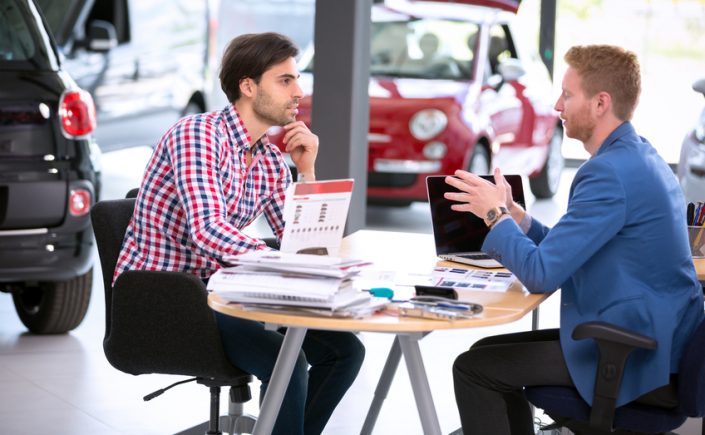 You could do a lot in 90 minutes. You could watch three 30 minute shows, walk six miles, or as a used car dealer, you could create an exceptional customer satisfaction experience during the car buying process at your dealership. A Cox Automotive study found that customer satisfaction at dealerships is highest within the first 90 minutes at the lot. After 90 minutes, customer satisfaction begins to drop.
You could do a lot in 90 minutes. You could watch three 30 minute shows, walk six miles, or as a used car dealer, you could create an exceptional customer satisfaction experience during the car buying process at your dealership. A Cox Automotive study found that customer satisfaction at dealerships is highest within the first 90 minutes at the lot. After 90 minutes, customer satisfaction begins to drop.
Depending on where a potential customer starts their buying process, the typical transaction at a dealership could last close to three hours, almost double the 90 minute window of peak customer satisfaction. Consumers walk into dealerships everyday excited and ready to buy, but leave unsatisfied due to the amount of time it took to close a deal. That deal your salesperson worked so hard to close, closed with an unsatisfied customer.
Of course, certain processes take time and have to happen for a sale to close, but how can dealerships ensure that customers are leaving satisfied with their car buying experience?
Value your customer’s needs
Every customer wants both their time and needs to be valued while shopping, especially for a larger ticket item such as a car. An experience focused on making sure buyers know the used car dealer they’re working with are putting their needs first helps to reduce the gap that can be felt between a salesperson and consumer. This could be as simple as staying later to work around full time work schedules, or making sure there are toys and activities around for a customer’s child to play with.
Keep it authentic and transparent
As a used car dealer, you know the vehicle buying process backwards and forwards. Sometimes getting back to the basics with customers is all it takes to create a more enjoyable buying experience. Making sure customers have an idea of what needs to happen between the time they choose a vehicle to purchase, and the time they finish signing the dotted line can help to improve transparency between your dealership and the customers it serves.
Can you bridge the gap between in-store and online?
The lines between shopping in-store and online are continually blurring. The idea of ensuring customers have an idea of what needs to transpire before the purchase of a vehicle should be mirrored both in-store and online. Many buyers want to complete a majority of the car buying process online before even stepping into a dealership.
Here are a few steps in the car buying process you could add to your dealership’s website to benefit customers that want to do a majority of their car buying online.
- Inventory: Showcasing your inventory online shows customers what you have in stock. Depending on what your potential customers are looking at, they can know at a glance whether or not your dealership offers the vehicle they are looking for.
- Price Negotiation: Price negotiation is likely the most painful part of the car buying process. It involves multiple dealership departments and can appear quite cumbersome to consumers who are accustomed to making immediate purchases. A tool like MakeMyDeal allows for a direct line of communication between customer and dealer. Deals and terms can be finalized before a showroom visit. This can help dealers understand what buyers are looking for in terms of features and prices, in addition, it can build trust between used car dealers and customers.
- Trade-ins: If a customer wants to trade in their vehicle, it can take time to determine the value of their trade-in and what they can put towards a new purchase. Including a realistic trade-in appraisal tool on your website can help to increase transparency between buyer and used car dealer, and can help streamline the trade-in process.
The key to putting these tools online is making sure that buyers who start the purchase process online will be able to pick up where they left off if they make an in-store visit. Whether a buyer starts their journey online or in-store, a cohesive online to in-store buyer experience is necessary.
Improving customer satisfaction not only makes the car buying process less painful for customers, but can also help to build customer loyalty. An Autotrader study found that customer loyalty to a dealership is stronger than their loyalty to vehicle make. The study also found that 30 percent of used car buyers return to a dealership where they previously purchased a vehicle or had previously had their vehicle serviced.
If your used car dealership isn’t leaving customers satisfied with their car buying experience, change is possible – and rewarding!



